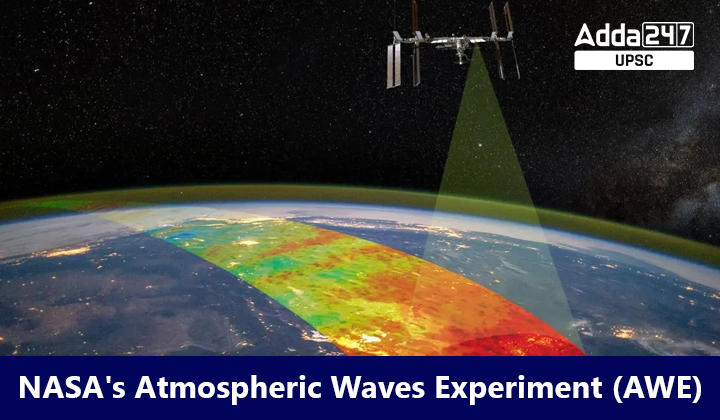Table of Contents
In the vast expanse of space, the delicate balance between terrestrial and space weather plays a crucial role in the functioning of our modern technological infrastructure. With an increasing reliance on satellite-based services for communication and navigation, understanding and predicting space weather events have become paramount.
To delve deeper into this intricate interplay, NASA is set to launch the Atmospheric Waves Experiment (AWE), a groundbreaking mission aimed at studying the interactions between terrestrial and space weather. In this article, we will explore the significance of space weather, the role of atmospheric gravity waves, and how the AWE mission is poised to unlock new insights into this fascinating realm.
What is Space Weather and Why Does it Matter?
- Much like Earth’s weather, space weather refers to the environmental conditions around our planet and other celestial bodies influenced by the Sun’s behavior, including solar flares and emissions.
- The repercussions of space weather can be profound, impacting critical installations on Earth such as satellite-based communication, radio communication, and the functionality of navigation and Global Positioning Systems (GPS) and power grids.
- As we witness an unprecedented surge in the use of satellite-based services, obtaining accurate forecasts and data on space weather has become indispensable for the smooth operation of modern technology.
Role of Terrestrial Weather in Space Weather
Space weather is not solely influenced by solar activities; it also comes under the sway of terrestrial weather. One significant factor in this complex relationship is the occurrence of atmospheric gravity waves (AGWs).
These waves, generated during extreme weather events or sudden disturbances, contribute to the vertical displacement of stable air, creating a wave-like pattern in the atmosphere.
Gravity Waves
Atmospheric Gravity Waves (AGWs) are vertical waves that propagate through a stable layer of the atmosphere. Similar to ripples in a pond caused by a pebble, these waves result from disturbances like thunderstorms, hurricanes, tornadoes, and regional orography.
A stable atmosphere is essential for the generation of gravity waves, where temperature differences lead to the upward and downward movement of air, creating a wave-like pattern. AGWs extend all the way to space, influencing space weather and contributing to the overall atmospheric dynamics.
Atmospheric Waves Experiment (AWE): A Pioneering Mission
Unveiling the AWE Mission
- In a groundbreaking initiative, NASA is gearing up to launch the Atmospheric Waves Experiment (AWE) under the Heliophysics Explorers Program.
- This $42 million mission is designed to study the intricate links between the lower layers of the atmosphere and the upper atmosphere, with a specific focus on understanding space weather dynamics.
- AWE will be mounted on the exterior of the International Space Station (ISS), offering a unique vantage point to observe Earth and record the mesmerizing phenomenon known as airglow.
AWE’s Unique Approach
- AWE aims to unravel the combination of forces that drive space weather in the upper atmosphere. By measuring airglow at the mesopause (approximately 85 to 87 km above Earth’s surface), where temperatures plummet to minus 100 degrees Celsius, AWE will capture faint airglow in the infrared bandwidth.
- This altitude provides an ideal vantage point, allowing the mission to resolve waves at finer horizontal scales than traditional satellites, offering unprecedented insights into atmospheric dynamics.
Advanced Mesospheric Temperature Mapper (ATMT)
- Central to AWE’s mission is the Advanced Mesospheric Temperature Mapper (ATMT), an instrument equipped with four identical telescopes comprising an imaging radiometer.
- This innovative technology will scan and map the mesopause, providing scientists with data on the brightness of light at specific wavelengths. The ability to observe and analyze airglow patterns in detail will enhance our understanding of space weather phenomena and contribute to improved weather forecasts.
Significance of AWE’s Findings
Mapping Colorful Airglows: AWE’s Primary Objective
- AWE’s primary objective is to perform focused mapping of the colorful airglows in Earth’s atmosphere. These vibrant bands of light, observable in the mesopause region, hold valuable information about the dynamics of space weather.
- The data obtained by AWE will not only contribute to the understanding of space weather but will also serve as inputs for weather models, ultimately enhancing the accuracy of weather forecasts.
Insights into the Ionosphere: Implications for Communication
- The health of the ionosphere, located at the edge of space, is crucial for maintaining seamless communication.
- AWE’s findings will shed light on whether the ionosphere is affected by transient events or intense perturbations resulting from natural phenomena like hurricanes or tornadoes.
- This knowledge is essential for optimizing communication systems that rely on the ionosphere, ensuring their resilience in the face of space weather variations.
Conclusion
As we stand on the cusp of the AWE mission’s launch, anticipation builds for the wealth of information it promises to unveil. AWE’s unique vantage point on the ISS, coupled with advanced instrumentation, positions it as a pioneering endeavor in the realm of space weather research.
The insights gained from AWE’s observations and data collection will not only advance our understanding of space weather but will also have practical implications for the resilience and optimization of the technology that underpins our modern way of life.
In a world increasingly reliant on space-based services, the Atmospheric Waves Experiment emerges as a beacon of scientific exploration, poised to unlock the mysteries of space weather and its profound impact on our interconnected world.



 TSPSC Group 1 Question Paper 2024, Downl...
TSPSC Group 1 Question Paper 2024, Downl...
 TSPSC Group 1 Answer key 2024 Out, Downl...
TSPSC Group 1 Answer key 2024 Out, Downl...
 UPSC Prelims 2024 Question Paper, Downlo...
UPSC Prelims 2024 Question Paper, Downlo...
